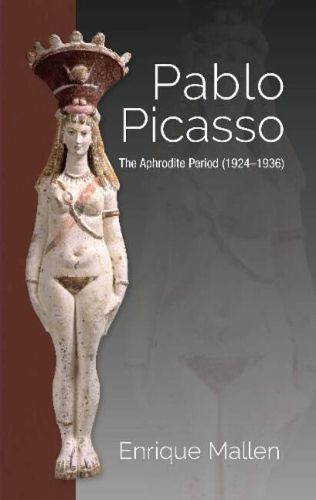Readings Newsletter
Become a Readings Member to make your shopping experience even easier.
Sign in or sign up for free!
You’re not far away from qualifying for FREE standard shipping within Australia
You’ve qualified for FREE standard shipping within Australia
The cart is loading…






As early as the ancient Greeks, goddesses served as Muses for artistic creation. In essence, a creatively charged energy inspired the artist, leaving a unique and recognizable mark on the artwork. Picassos relationships with the women in his life was deeply formative, and he often represented them as Muses. He was particularly unabashed in the declaration of his feelings to one of them, Marie-Therese Walter, his youthful mistress of 1927. But at that point Picasso was still married to Olga Khokhlova, thus forced to practice the utmost discretion. His marriage to Olga made him increasingly frustrated with her imposed bourgeois expectations. As a release from this marital burden, Marie-Therese was ever present in his work, often portrayed as Aphrodite with a wreath in her hair, a basket of flowers and fruits by her side. Marie-Therese was the Dream
the Muse. This fertile period coincided with the strong influence of surrealism which helped liberate Picassos psyche from the straitjacket that Olgas lifestyle imposed on him. By 1935, however, the model and mistress became a mother to Maya, radically changing the role she previously had. The following year Picasso was introduced to a new woman, Dora Maar, an encounter that signalled the beginning of the end of Marie-Thereses exclusive claim on Picassos affections and the closing of an artistic period clearly marked by fertility. The Aphrodite Period (19241936) provides new insights and analysis of Picassos life as recently uncovered through the research of the Online Picasso Project. This time-span is one of the most illustrative periods of Picassos career in that it clearly demonstrates the close interdependence between sexuality and artistic creativity that characterize Picasso’s entire output.
$9.00 standard shipping within Australia
FREE standard shipping within Australia for orders over $100.00
Express & International shipping calculated at checkout
As early as the ancient Greeks, goddesses served as Muses for artistic creation. In essence, a creatively charged energy inspired the artist, leaving a unique and recognizable mark on the artwork. Picassos relationships with the women in his life was deeply formative, and he often represented them as Muses. He was particularly unabashed in the declaration of his feelings to one of them, Marie-Therese Walter, his youthful mistress of 1927. But at that point Picasso was still married to Olga Khokhlova, thus forced to practice the utmost discretion. His marriage to Olga made him increasingly frustrated with her imposed bourgeois expectations. As a release from this marital burden, Marie-Therese was ever present in his work, often portrayed as Aphrodite with a wreath in her hair, a basket of flowers and fruits by her side. Marie-Therese was the Dream
the Muse. This fertile period coincided with the strong influence of surrealism which helped liberate Picassos psyche from the straitjacket that Olgas lifestyle imposed on him. By 1935, however, the model and mistress became a mother to Maya, radically changing the role she previously had. The following year Picasso was introduced to a new woman, Dora Maar, an encounter that signalled the beginning of the end of Marie-Thereses exclusive claim on Picassos affections and the closing of an artistic period clearly marked by fertility. The Aphrodite Period (19241936) provides new insights and analysis of Picassos life as recently uncovered through the research of the Online Picasso Project. This time-span is one of the most illustrative periods of Picassos career in that it clearly demonstrates the close interdependence between sexuality and artistic creativity that characterize Picasso’s entire output.